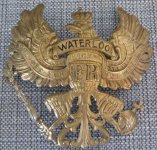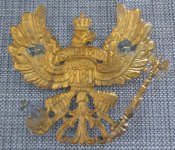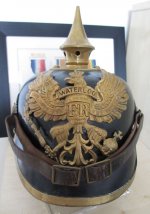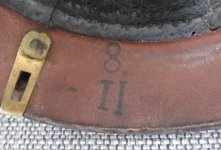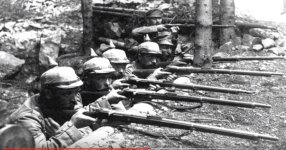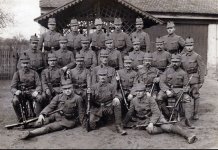garlanj
Active member
Hello all.
This is my latest addition an M95 for JR 74 (1st Hannover).
The shell and metalwork (apart from the wappen) seem to be in pretty good condition for a helmet that’s 120 years old.
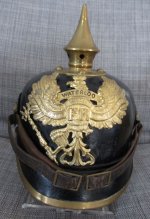
The liner is complete and still supple with no torn holes in the fingers and what looks like the original lacing.
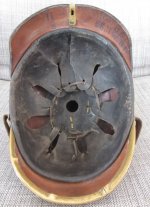
The helmet is stamped JR 74 1899 and 9(or 2?)B 1901 on one side and 8 I| on the other
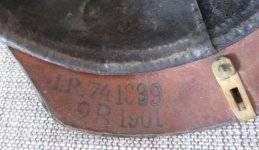
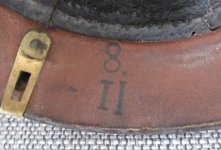
The cockades both seem to be original as is the chinstrap although it does seem VERY long – never seen one this long before.
The wappen as you can see has lost a leg, but I was fortunate enough to have bought one off a French dealer about a week before this one came up on German eBay small ads.
I’d welcome your thoughts and comments
This is my latest addition an M95 for JR 74 (1st Hannover).
The shell and metalwork (apart from the wappen) seem to be in pretty good condition for a helmet that’s 120 years old.

The liner is complete and still supple with no torn holes in the fingers and what looks like the original lacing.

The helmet is stamped JR 74 1899 and 9(or 2?)B 1901 on one side and 8 I| on the other


The cockades both seem to be original as is the chinstrap although it does seem VERY long – never seen one this long before.
The wappen as you can see has lost a leg, but I was fortunate enough to have bought one off a French dealer about a week before this one came up on German eBay small ads.
I’d welcome your thoughts and comments

